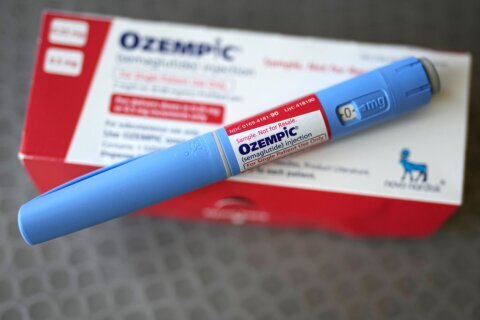Many Americans are carrying around a bit more fat than they should be. According to the Centers for Disease Control and Prevention, more than 73% of Americans have obesity or overweight, and this can increase risk for a vast number of health issues from diabetes and heart disease to cancer.
So which exercises are best to help you budge that excess weight? “That’s actually a trickier question than it would have seemed because a lot of exercise is not as great for burning fat as many people think,” says Mike Matthews, a certified personal trainer, podcast host and founder of Legion Athletics, a sports supplement company based in Clearwater, Florida.
Calorie Imbalance: Diet and Exercise
This is because underlying much of anyone’s efforts to burn fat or lose weight are the calories taken and then expended in support of those physical efforts. “If we’re going to burn fat,” Matthews explains, “we have to burn calories. That’s all fat really is — it’s an energy reservoir. A lot of exercise, unless it’s really high intensity exercise, it doesn’t burn as many calories as we would hope.”
For example, Matthews, who’s also the author of “Bigger, Leaner, Stronger” and the forthcoming “Muscle for Life: Get Lean, Strong, and Healthy at Any Age,” says he’d just completed an hour-long “pretty intense” strength training session. “I’m pretty sweaty right now, and I burned maybe 500 or 600 calories. That might even be a little bit generous, but that’s a decent number — about one-seventh of a pound of fat. But when we compare that to how easy it is to eat 500 or 600 calories, we quickly see the imbalance there.”
He adds that “this is not to say that exercise isn’t effective at burning fat, it’s just that I like to look at exercise as more of a driver of muscle building and strength building, which of course helps build up your metabolism. It’s an aid in fat burning, but it’s diet that’s the primary tool for fat-burning and we use exercise to supplement that.” Matthews says he thinks of exercise as the way “we improve our body composition by adding muscle and by gaining strength, not primarily as a mechanism for burning fat.”
Shelby Reichle, an athletic conditioning specialist with the Ohio State University Wexner Medical Center in Columbus, agrees. “A lot of people think fat burning and fat loss is all about exercise. And it’s definitely a piece, but the nutrition and the stress piece, the hormonal balance piece of it all, is indispensable.” In other words, there’s more to losing weight than just hitting the gym, but staying consistent with a weight training protocol certainly can help.
[See: The Best Plant-Based Diets.]
Strength Training and HIIT for Fat Loss
Jessica Mazzucco, a New York City-area certified fitness trainer and founder of The Glute Recruit, notes that “weight and resistance training and high intensity interval training or HIIT burn the greatest amount of fat. HIIT leaves your metabolism burning an increase in calories for up to 24 hours post-exercise. It’s the most effective way to burn fat and it constantly spikes your heart rate for a brief period, which leaves your metabolism humming all day long.”
Matthews also recommends focusing on strength training to burn fat. “Unless you have a lot of time to exercise — I mean, like two-plus hours per day — I like to tell people to spend most of their time on strength training, on training their muscles.”
Reichle also recommends multi-joint resistance training, using “complex movements” such as:
— Squats.
— Lunges.
— Deadlifts.
— Dumbbell or barbell bench press.
— Push-ups.
— Free-weight rows.
— Loaded carries, such as farmer’s carry or farmer’s walk, suitcase carry and goblet carry.
“It’s preferable if they’re done with free weights,” she says, and you should be looking to spend more time doing these exercises that involve multiple joints and muscles, rather than focusing on a single area, such as a bicep curl or triceps extension. “Doing those big, multi-joint compound movements with heavy weights, that gets your heart rate up, and that’s going to contribute to strength gain, muscle gain and ideally, fat loss.”
These benefits last long after the workout is over, Reichle adds. “Your body is not in a true resting state for hours after you finish exercise, so you’re going to keep burning more calories.”
In fact, Mazzucco notes, “studies have shown that after weight training, the metabolism can be boosted for up to 30 hours post training session. Weight and resistance training also ensures the weight you lose comes from fat rather than muscle stores.”
Get Professional Advice
Reichle cautions that before you jump in with these exercises or any other exercise regimen, that you first make sure your doctor has cleared you to work out. Especially when working with heavy weights, you need to proceed with caution to ensure you don’t overdo it or get hurt.
She also strongly encourages you to talk with a trainer or other expert who can make sure your form is correct and not likely to lead to injury. “If you aren’t sure how to do those movements properly, especially if you’re moving from using machines to free weights, that’s when you need a qualified professional to help you work with your form.”
When undertaking HIIT workouts, you have to achieve very high intensity for these practices to live up to the hype. Reichle notes that the Rated Perceived Exertion Scale, or RPE, scale can be useful in determining whether you’re working hard enough during a HIIT workout for it to be worthwhile.
“On a 1 to 10 scale, we’re talking a 7 to an 8, or vigorous intensity. Maybe even a 9, for the high-intensity part.” She says the high-intensity and low-intensity portions of the workout have to have a big separation, with the recovery work segments coming in at a 2, 3 or 4 on that intensity level to truly achieve a HIIT workout.
You can do these kinds of workouts on a bike, treadmill, in a pool, with circuit training in the weight room and a range of other ways. “The biggest thing is just making sure that with your heart rate and your breathing, that you’re experiencing the difference between the high intensity and the low intensity.”
The metabolism boost you get from strength training or HIIT workouts comes from adding more muscle to your body. Leaner muscles can help burn more fat after you’ve left the gym for the day. Plus, “where strength training can shine is by putting lean muscle in the right places on your body. That’s how you go from that ‘skinny-fat’ look to looking very fit,” Matthews says.
[See: Mind-Blowing Benefits of Exercise.]
Targeting Problem Areas to Burn Fat
“Contrary to popular belief, doing endless sets of crunches won’t blast belly fat,” Mazzucco notes.
“I wish I had the magic bullet” for targeting specific areas of hard-to-lose fat on the body, Matthews says, but “unfortunately there are no pills, powders or potions that are going to make a huge difference.”
Instead, he urges consistency with controlling your diet and working out. “The real key is patience. Unfortunately, I know that’s not what many people want to hear.”
Your body will give up its fat reserves in time and in the order your body prefers, he says. Some people keep fat in the abdomen or thighs, and these areas might be the last to shift. For others, it’s the hips or buttocks. It varies by person based on your physiology. But with steady determination, you will see results.
Reichle agrees that “it’s impossible, unfortunately, to burn fat in one area. Your body burns fat as a whole because of exercise and nutritional changes.”
While you can’t target a single area, such as the belly, in isolation, “there are core-centric exercises that will help to burn fat all over the body, resulting in less belly fat,” Mazzucco says.
For example, she says completing core-focused exercises that “also involve multiple muscle groups with high-intensity interval training” can boost caloric burn. “I’m a big advocate of mountain climbers, burpees, medicine ball burpees, side to side medicine ball slams and BOSU ball planks,” she says.
Diet Is Key for Weight Loss
“There’s a saying that you can’t outrun your fork,” Mazzucco says. “Many people think if they’re working out vigorously and frequently, that they can neglect their diet and the pounds will melt away because they’re exercising. This is a fallacy. Diet and nutrition plays a large part in the weight loss process along with exercise.”
But knowing exactly how to eat for weight loss isn’t always straightforward either. Matthews says every person is different when it comes to optimizing diet. “I like to tailor it to people individually when it comes to food choices. I’m a big proponent of what’s referred to as flexible dieting, which is where you have no foods that are forbidden and there are no foods that you have to eat.” This approach to dieting — where no food is strictly off limits — is often a much more sustainable approach to eating for long-term weight and fat loss than fad or crash diets.
The CDC defines healthy weight loss as 1 to 2 pounds per week. “Losing weight faster than that can lead to complications or gaining the weight back quickly,” Mazzucco says.
If you’re looking to lose weight, Matthews says a good starting point is to fuel your body with nutritious foods that you enjoy at a ratio of about 10 calories per pound of body weight per day and get about three to five hours of exercise per week. “That’s really the Goldilocks zone. Some people can eat a bit more than that and do just fine. Some people need to eat a little bit less than that, maybe as low as 8 or 9 calories per pound of body weight per day. But something around 10 calories per pound of bodyweight per day is the starting protein.”
He also recommends making sure you’re getting 30% to 40% of your calories from lean protein, “which is very important for feeling full and supporting muscle gain.”
However, this formula doesn’t always work well for people who have a lot of weight to lose, Matthews cautions. “If somebody has a lot of weight to lose, another way of looking at it would be one gram of protein per centimeter in height. It’s not perfect, but it works out fairly decently.” For most people, you’ll fall in a range of 130 to 200 grams of protein per day with this calculation.
Once you’ve dialed in on the right number of calories and grams of protein to eat each day, “then the rest is very negotiable” in terms of other dietary preferences.
The bottom line, Matthews says, is, “I don’t want it to be a 30- or 60- or 90-day crash program that leaves you feeling burned out. I want you to do something that you can see yourself doing for the long haul.”
[See: 9 Useful Gym Machines for Women.]
Addressing Health Needs Holistically
If you’ve been struggling to lose belly fat or are experiencing weight regain after dieting, there may be something else going on that needs addressing, Reichle says. Because after all, sleep, mood and hormonal and metabolic issues are all interconnected.
“Especially for people who work out, work out, work out and try to eat right and cut their calories but aren’t losing weight, that’s a huge red flag. It’s a big stop sign, and my best advice is to truly invest in going to see a registered dietitian or functional medicine practitioner or a doctor who can look at your blood work and your health as a whole,” to offer insights into how to jump-start weight loss. “There are people who, despite how hard they try, until they get that help it’s very unlikely that they’re going to be able to lose the weight they want to lose because it’s a holistic thing.”
While adjusting to burn more calories than you take in is the underlying philosophy for most approaches to weight loss, losing weight and losing fat can be a more complex undertaking for some people with certain metabolic conditions or other factors that might interfere with typical progress. “I wish it were as easy as calories in, calories out,” Reichle says. “But I think that’s a huge, huge misconception that some people still believe. Our bodies aren’t that simple.”
Make Exercise Part of Your Lifestyle
Still, exercise is good for you for a variety of reasons, not just for weight loss, so Matthews says you should aim to hit the gym for about three to five hours a week. But even if that’s not possible, “let’s work with what you can do. Even if it’s just an hour or two per week” or going for a long walk a couple times a week — start there and do your best to stay consistent.
And while strength training may offer a bigger bang for your buck in terms of boosting metabolism, don’t neglect cardiovascular training, such as walking, running, swimming or cycling.
Reichle says that “steady state cardio can help you burn fat and lose weight. But I think sometimes people hit a plateau and to break through the plateau they think they need to increase the volume or the duration. That often becomes an issue because of time constraints or they end up getting injured.” Instead of just working longer, work harder, she says. Vary the intensity to help bust through that plateau.
Mazzucco agrees that “an effective exercise regimen should have a healthy blend of both cardio and strength training exercise coupled with recovery work including stretching. Cardio needs to be a part of any fitness regimen because it’s good for the heart, the body, burns calories and has a positive effect on mood. To prevent weight gain after you’ve lost weight, engage in at least 250 minutes of moderate-intensity exercise per week.”
Matthews recommends hopping on a stationary bike or a treadmill while you’re on work calls to try to fit in a little more time in the day for working out.
Don’t Forget the Importance of Sleep
Amid all this talk of working out and eating right, Reichle notes that you have to remember to sleep too. “The body needs rest. I can’t emphasize that enough. The working out portion is good for you, but it’s the breakdown portion. Sleep is the rebuilding portion. If you can’t support exercise with proper sleep, it could be more detrimental than helpful, especially if we’re talking about doing intense exercise or heavy lifting.”
Lastly, Matthews says it’s important to focus on activities you enjoy. Because if you’re not having fun, you’re going to be way less motivated to keep going. “Make it as fun, enjoyable and easy to stick with as possible.”
More from U.S. News
Ways to Shift Your Mindset for Better Weight Loss
11 Healthy Food Swaps to Lose Weight
9 Signs You Should Stop Exercising Immediately
Best Exercises to Burn Fat originally appeared on usnews.com
Update 12/14/21: This story was previously published at an earlier date and has been updated with new information.







